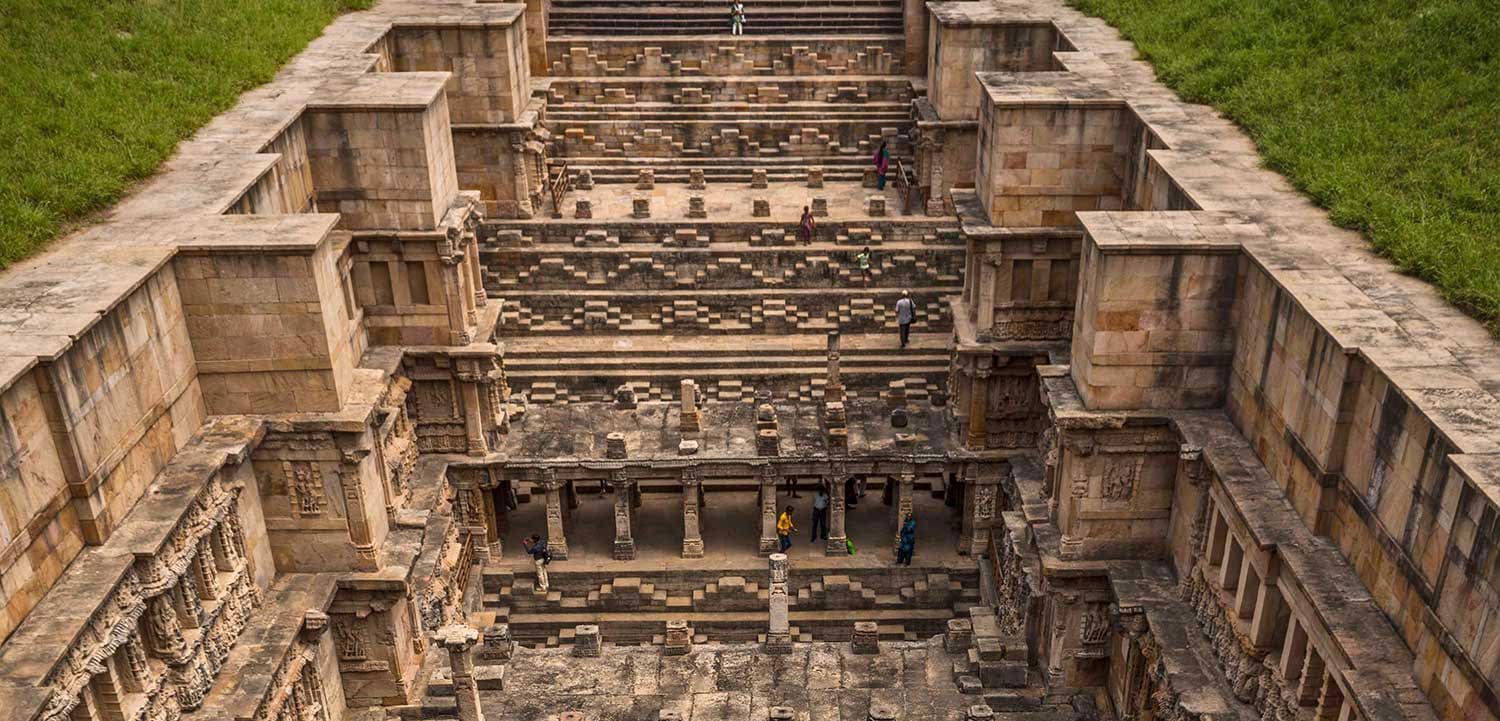Rani Ki Vav
Tell us what you need and we will respond to your query as soon as possible!

Rani Ki Vav or 'Queen's Stepwell' may be a distinctive form of water capacity framework found within the little town of Gujarat called Patan, on the banks of Waterway Saraswati. Accepted to be the most amazing stepwell within the state of Gujarat, Rani ka Vav typifies the top of Maru-Gujarat architectural style. The 900-year-old structure recorded as a UNESCO World Legacy Location is shown conspicuously within the unused ₹ 100 cash note issued by the Save Bank of India
Within the long time past days, the water of the well had medicinal properties which made a difference ward off infections like viral illnesses and fever. The well was exhumed within the 1960s in a well-protected state because it was buried beneath opening for havens. In expansion to this, Rani Ka Vav was an critical middle for socializing among the local people as well as taking asylum from the warm. It's an fabulous illustration of turning something utilitarian into a chunk of craftsmanship.
Rani ka Vav cited as one of the marvelous pieces of design, reflects the ordinary Maru-Gurjara structural fashion. It shows complicated method and respecting the magnificence of subtle elements and extent accomplished. Initially built as a commemoration within the 11th century, this stepwell, separated from having sound water sourcing and structural stability, is additionally a chunk of genuine imaginative dominance.
The well is isolated into seven levels of stairs embellished with sculptural boards of tall imaginative quality in conjunction with more than five hundred guideline figures and over a thousand other devout and legendary figures, regularly referencing scholarly works.
Situated within the east-west heading, the fourth level, which is the most profound, leads to a rectangular tank (9.5 meters by 9.4 meters) at a profundity of 23 meters.
The well moreover holds devout importance, and in this way, is planned as an modified sanctuary highlighting the holiness of water.
A number of stone structures delineating the different 'avatars' or signs of Ruler Vishnu such as Kalki, Rama, Krishna, Narsinh, Vaman, Varahi can be seen here.
Interests, the figures of different Yoginis and Apsaras can be seen here wearing the 'Solah - Shringar' or 16 diverse styles of ornamentation of oneself.
The vavs of Gujarat, separated from being the location of collecting water and mingling, were moreover of incredible otherworldly significance within the past. In spite of the fact that at first, the plan of these wells inclined more towards a oversimplified plan, over time these styles got to be more complex and complex. This was done primarily to stress on the holiness of the water being put away within the vav. Rani Ki Vav is one such case that gives a feel of a underground sanctuary on entering.
The foremost unequivocal pieces of adornment here ought to be the statues and figures of Ruler Vishnu.
The common subject of Rani Ki Vav is 'Dashavatars' or the ten incarnations of the god.
The well slips to sub - terranean levels where you'll be able watch around 800 unmistakable figures spread over seven exhibitions.
The incarnations of Ruler Vishnu, specifically, Matsya, Kurma, Varaha, Narasimha, Vamana, Parashurama, Rama, Krishna, Buddha, and Kalki are went with by statues of sadhus, Brahmins and firmament artists or 'Apsaras'.
The foremost forcing symbolism here is display at the water level of the Rani ki Vav, where you'll be able see Vishnu leaning back on the thousand-hooded serpent Shesha.
The interesting stepwell was built from 1063 to 1068 Advertisement in Chalukya Line as a commemoration of Bhimdev Solanki by his widowed Ruler Udaymati. It is outlined within the shape of an rearranged sanctuary, isolated into seven levels, highlighting the holiness of water. Separated from being a water capacity system, Rani Ki Vav is additionally known for its unpredictably carved figures on columns that numbers around eight hundred basically based on the subject of Master Vishnu.
It is accepted that Rani ka Vav was commissioned by the widowed ruler Udaymati within the affectionate memory of her spouse Bhimdev I (Advertisement 1022 to 1063), child of Mularaja, the author of the Solanki tradition of Anahilwada Pattan. The development begun around 1050 Advertisement and was likely completed by Udayamati and Karandev I after the passing of her spouse.
One can discover the reference of Udayamati building the landmark within the 'Prabandha Chintamani' composed by Merunga Suri in 1304 Advertisement. Afterward, the vav was overwhelmed by Stream Saraswati found adjacent and silted over until the 1980s. It was at that point that Archeological Study of India uncovered it in conjunction with its carvings in perfect condition. Nowadays, considered as a man-made wonder, Rani ki Vav is among the finest stepwells within the legacies of the antiquated capital city of Patan.
perfect way">The most perfect way to reach the Rani ka Vav is through taxi. One can moreover visit by open buses. In case you arrange on taking the transport, a number of intercollegiate buses run from Ahmedabad to Patan and take roughly 3.5 hours to reach. Buses from Mehsana to Patan take almost an hour. Shared jeeps are accessible as well, and they are marginally speedier but less comfortable.
Amid the month of December or January, a Rani ka Vav celebration is held where one can appreciate the social program together with wonderful neighborhood food and road shopping.
The most excellent time to visit Rani ki Vav is amid the morning, when it opens. There are an awfully few individuals at that time and the sunrays make it amazingly photogenic.